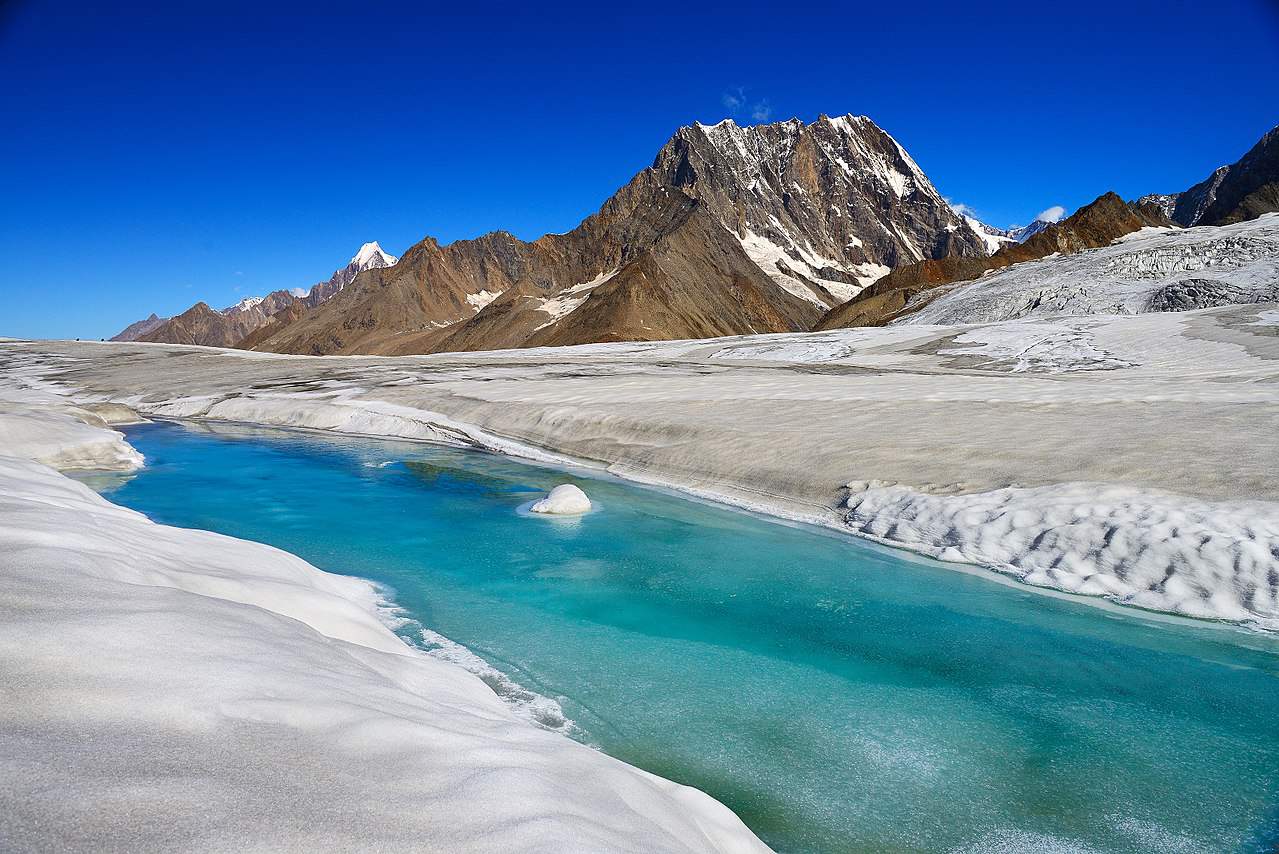The journal, Environment Science and Pollution Research, recently released a study that showed how rapidly Drass glaciers are melting.
Results of the study –
- Since 2020, significant uptick vehicle traffic in area, primarily result control’s substantial military buildup on both sides effects Drass glaciers melting.
- Such retreating is ascribed to increased black carbon concentration from vehicle emissions is why Drass glaciers are rapidly melting.
- According to study data, glacier area was down from 176.77 sq. km. which represents almost 3% of the entire glacier area in 2020.

Glaciers’ importance –
- An early sign of an increase in global temperature is the glacier melting rate, which is a climate change indicator.
- Global weather: All natural elements like glaciers, plants, animals are directly accountable for weather phenomena like air masses and other similar phenomena.
- Glaciers are cause of thermo-Haline circulation, which affects both circulation of ocean currents and meteorological phenomena.
- They are vast reservoirs of fresh water, which are essential to all living things for both personal use as well as use in a variety of industries including agriculture and hydroelectric power generation.
- The river regime determines flow, load, permanency of river systems.
Causes of glacier melting include –
- Numerous glaciers melting quickly since 20th century. This phenomenon primarily caused by human activity.
- Industrial revolution, carbon dioxide, greenhouse gas emissions increased temperatures, even more near poles. Result, glaciers rapidly melting, calving off into sea, retreating on land.
- The sun’s heat millions times more efficiently than CO2, black carbon (BC) concentration is significant contributor glacial melting.
- Ocean warming: Since oceans absorb 90% of the earth’s heat, impact on both marine heat waves and the melting of marine glaciers.
- A result of solar cycle-related events.
Impact of melting –
- Glacier melting causes sea levels to rise, which in turn exacerbates coastal erosion.
- Boosts storm surge frequent and strong coastal storms like hurricanes and typhoons are brought on by warming air and ocean temperatures.
- Disturbs ocean’s regular circulation patterns.
- Extreme weather result of the unpredictable polar vortex and jet streams.
- Numerous catastrophes are connected to glacier melting. Landslides, avalanches, bursting of glacial lakes, river flooding all result from the melting of glaciers.
- The supply of food, water for roughly 13% of the world’s population impacted melting of Indian glaciers. The fauna and biodiversity will suffer as a result.

India’s National Mission Sustaining Himalayan Eco-System established 2010 as part of country’s National Action Plan Climate Change to address number of concerns and stop the glaciers melting.
India signatory many other global climate agreements, including Paris Agreement and Kigali Agreement. Furthermore, founder member of international solar alliance.
India started number of national-level programmers, FAME Scheme, national clean air programmer, others related to to climate change.
Stop glaciers melting and address climate change challenges, Centre administration made numerous more initiatives.
Arctic might be ice-free in summer 2040, according to scientists’ projections, emissions rise unchecked, while air and ocean temperatures continue to rise quickly.
This reason, we must enact stringent rules to protect the environment.
Read More: Climate Change: Melting Glaciers The Next Big Pandemic Fear
Read More: The dry ice glaciers on Mars are moving at its south pole













